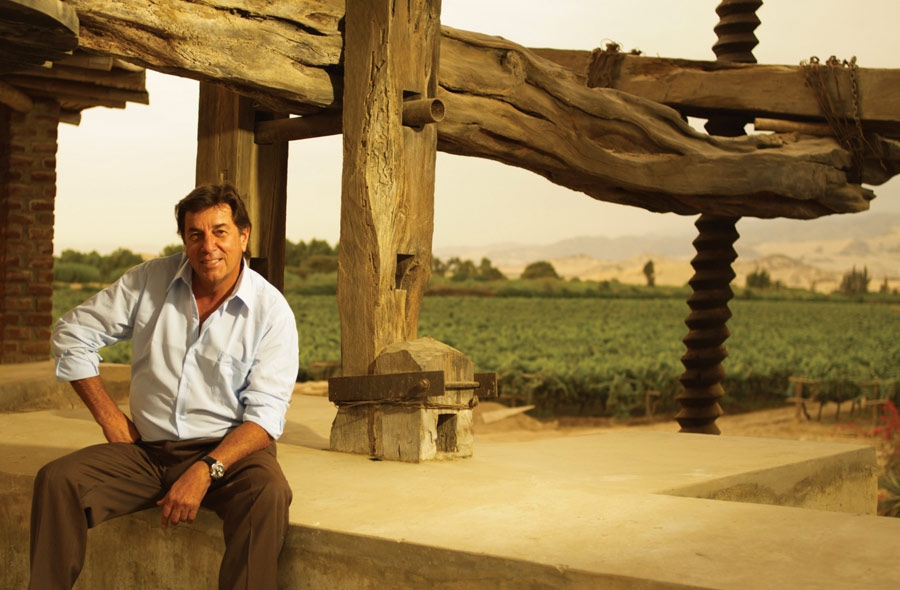
Spanning from Alaska’s Prudhoe Bay to Ushuaia, Argentina, the Pan-American Highway is the world’s longest “motorable road” and stretches an impressive 48,000 kilometers.
It was only a small section of this transcontinental motorway that was traversed during my recent trip to Peru, but one that set the stage for a beautiful and educational experience.
After a relatively uneventful flight from JFK and a restful, albeit short, night’s sleep, we headed down the Peruvian coast with one place in mind — the Chincha Province of Ica, the country’s famed and historic pisco-making region.
After a scenic three-hour ride, our first stop was Viñas de Oro, one of the more established pisco manufacturers. Located within the Hacienda Hoja Redonda, 213 kilometers south of Lima, in the traditional district of El Carmen, this winery opened its doors in 1983. Currently, the property encompasses eight hundred hectares, eighty of which are dedicated to growing seven types of pisco grapes (aromatic: Italia, Moscatel, Torontel, Albilla and non-aromatic: Quebranta, Common Black and Mollar).
After a tour of the pristine distillery and an extensive tasting at the onsite bar, we were back on the road and pointed in the direction of La Olla de Juanita, home to some of the finest rustic Peruvian cuisine. Located in an area named Pisco Row, this restaurant offered comfort food at its best and left us well fortified for the journey ahead. Next it was off to experience a pair of Ica’s more rustic distilleries. Owned by two brothers, Bodega El Catador and Tres Generaciones are located adjacent to one another and share their facilities. A lively and informative two-in-one destination, it is one of the more interesting “artisanal” bodegas to visit in the area and is conveniently located on Panamericana Sur.
To wrap up a spectacular day of food and pisco tasting, we headed to the lovely beach town of Paracas to check into what would be our home for the next two days — La Hacienda Bahia Paracas. Paracas is a district in Ica best known for its National Reserve. An intimate community thriving with local food and culture, Paracas is a beautiful fusion of marine habitats and tropical desert, and home to some of the most alluring coastlines and wildlife in the country. This hotel walks the fine line of rustic sensibility and modern amenities with grace, and delivers an absolutely pristine paradise.
La Hacienda Bahia Paracas provided a spectacular night’s sleep and left us eager to experience what is certain to be the crown jewel of the Peruvian Pisco landscape —Hacienda La Caravedo. Since 1684, Hacienda La Caravedo has been home to the oldest working distillery in the Americas and it is here that Pisco Portón is produced and keeps alive centuries-old traditional methods without the use of electricity or modern machinery. A large wooden lagar (press) does the work of pressing the grapes and gravity-fed channels move the Pisco from one step of the process to the next — the only system of its type in the world. The gentle touch that this gravity-fed system provides ensures the quality and smoothness of the final product.
On the same property and adjacent to the historic distillery, Portón has created a new cutting-edge distillery modeled upon the wisdom and heritage of these traditional methods. Master Distiller Johnny Schuler, one of the foremost pisco authorities in the world, has dedicated much of his life to setting the standards for excellence in the pisco industry and revitalizing interest in Peru’s native spirit. After being brought on board, he designed the new distillery so that it also would move the precious liquid only through the natural forces of gravity, just as it has been done at this location since its inception in 1684. The new distillery also allows for the same small batch distillation and control over every bottle and was created with environmental stewardship in mind. The attention to detail is inspiring — Johnny Shuler’s blood runs green and he clearly walks the walk. A lush roof garden has been planted to offset the carbon dioxide emissions created naturally during fermentation and a water treatment system is in place to recycle water from the distillation process into irrigation water for the vineyards.
Hacienda La Caravedo truly captures Peru’s passion for its native spirit. This is, without a doubt, one of the most beautiful pieces of land I have ever had the privilege of visiting, and after only four years, Portón is the number one exporter, as well as the world’s largest producer of ultra-premium pisco.

